18.06.17
Hokusai: Beyond the Great Wave
Key points of interest: Shifting landscape/ motion/ line/ colour
'ONE HUNDRED BRIDGES AT A GLANCE'
From Exhibition Text:
The American Dream: Pop to the Present
Like a sunken architectural ruin...
Jim Dine: Five Paintbrushes
An edition printed at each state - TRANSFORMATIVE
Addition of technical process at each state. I'd like to try something like this with my landscape images.
Humour
Blunt and stark clash between man-made and natural
Colour/ Shape/ Geometry/ Surface
Hokusai: Beyond the Great Wave
Key points of interest: Shifting landscape/ motion/ line/ colour
'ONE HUNDRED BRIDGES AT A GLANCE'
 |
Suspension bridge on the border between Hizen and Etchū provinces, about 1834
- Katsushika Hokusai |
During the autumn of 1822 while meditating, Hokusai had a vision of a landscape filled with over 100 bridges leading ‘from one to another in a logical order’.
 |
| Creating my own imaginary bridges |
The American Dream: Pop to the Present
 |
| 'Floating Three Way Plug' Claes Oldenburg |
Jim Dine: Five Paintbrushes
 | |
| Third State |
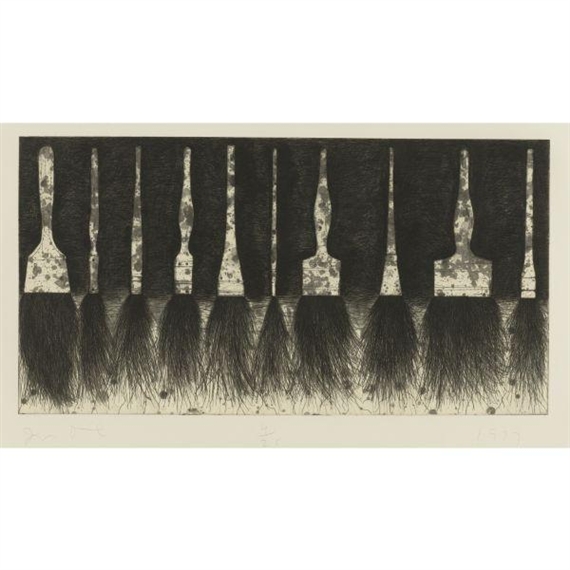 |
| Sixth State |
An edition printed at each state - TRANSFORMATIVE
Addition of technical process at each state. I'd like to try something like this with my landscape images.
 |
| Big red wrench in a landscape (1973) Jim Dine |
Blunt and stark clash between man-made and natural
RICHARD DIEBENKORN
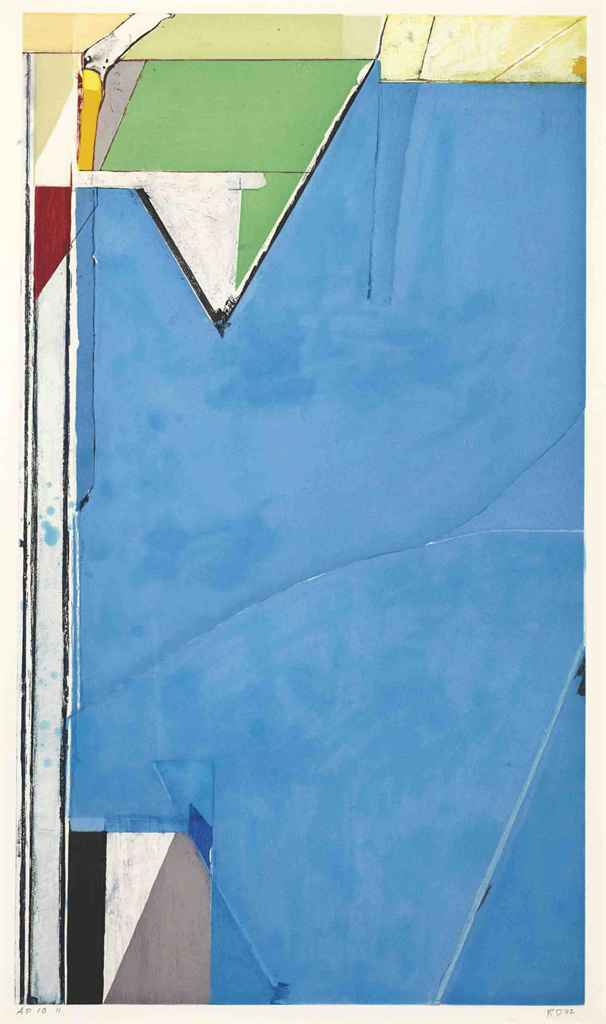 |
High Green, Version II |
Ed Ruscha
- 26 Gasoline stations book
- Every building on the Sunset Strip (1966) - 7.6 metres (displayed on a slanted orange shelf)
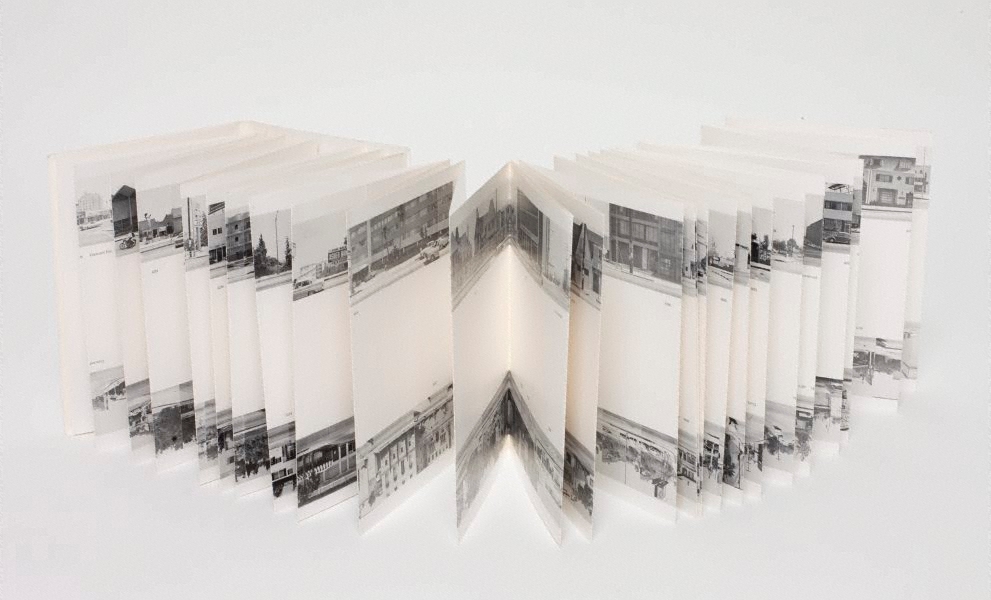 |
Every building on the Sunset Strip (1966) |
 |
| Standard Station (1966) |
Fred Sandback
Sculptural motifs in lino
Blueprints/ plans... (on japanese laid paper)
Julie Mehretu
Algorithms, Apparitions and Translations (2013)
Series of five etchings with aquatint, drypoint, and engraving
'...a restless power and capacity for renewal...images evoke a sense of flux and turbulence as shapes appear and disappear...'
 |
| Sapphic Strophe (2013) |
Shapes in space...
---
10.06.2017
Psychogeometry
David Batchelor
Matt's Gallery
Wall drawings with painted timber structures.
Referencing european geometric abstraction.
Inspired by a series of drawings exploring colour and blackness - the city reveals its full spectrum of colours at night ( as I discovered taking my photographs from train windows).
Dialogue between 2D and 3D.

 | ||
| my own photograph of the city at night |
Fragments of architecture which we are asked to navigate both physically and visually.
Great reading/ publications room!
 |
| Atomic Drawings 82 |
Discovered 'Found Monochromes' series.
“I often feel that abstract art is the art of the city and that the monochrome is its exemplary form”.
David Batchelor
http://www.whitechapelgallery.org/exhibitions/david-batchelor/
Future reading:
The Lumnious and the Grey
---
---
10.06.2017
Tess Jaray: Into Light
Marlborough Fine Art
geometry/ colour/ pattern/ repetition/ architectural structures - Islamic tiling, non-western ancient structures, renaissance architecture...
'Jaray focuses on what she describes as 'the geometry of human relationships', challenging the viewers perception and relationship with the space surrounding us.' (Into Light press release)
Relationship between form, space and colour
geometry/ colour/ pattern/ repetition/ architectural structures - Islamic tiling, non-western ancient structures, renaissance architecture...
'Jaray focuses on what she describes as 'the geometry of human relationships', challenging the viewers perception and relationship with the space surrounding us.' (Into Light press release)
Relationship between form, space and colour
 |
| Paintings inspired by Aleppo |
---
10.06.17
Minimalist Anyway: Kazuko Miyamoto & Lydia Okumura
White Rainbow Gallery
 |
| Diagram of the reason A B C (1980) Lydia Okumura |
Breaking down everything into its linear form
---
20.04.17
ELECTRICITY: THE SPARK OF LIFE
https://wellcomecollection.org/electricity
Mimic board from Becca Hall (1983)- graphic representation of power distribution networks. From exhibition information 'The mimic board epitomises the rational, ordered grid format that has become synonymous with modern perceptions of electricity networks.'
Electricity pylons from around the world (Australia; New Zealand; USA & Canada; Asia; France & Africa) 1920-29
Pylons first introduced in the 1920s. From exhibition information:
'These lattice-structured transmission towers that relay vital power from one end of the country to the other have now become an icon of design in many countries, though they are often a contentious feature of the landscape.'
Love the image of the pylon being errected. Structural, seemingly immovable forms at impossible angles.
12.04.17
ELECTRICITY: THE SPARK OF LIFE
https://wellcomecollection.org/electricity
Mimic board from Becca Hall (1983)- graphic representation of power distribution networks. From exhibition information 'The mimic board epitomises the rational, ordered grid format that has become synonymous with modern perceptions of electricity networks.'
Pylons first introduced in the 1920s. From exhibition information:
'These lattice-structured transmission towers that relay vital power from one end of the country to the other have now become an icon of design in many countries, though they are often a contentious feature of the landscape.'
Love the image of the pylon being errected. Structural, seemingly immovable forms at impossible angles.
12.04.17
Edward Paolozzi
Whitechapel Gallery
---
12.04.2017
Light Reading
Elizabeth McAlpine
--- 13.04.2017
TURNER CONTEMPORARY
MARGATE
---
09.04.2017The Studio: A Tireless, Ongoing Space
Geta Bratescu
Camden Arts Centre
---
08.04.2017
Wolfgang Tilmans
Tate Modern
---
22.03.2017
Stealing Space
Richard Wilson
Annely Juda Fine Art
---
26.02.2017
Musee National Marc Chagall
(Contemporary French Artist)...
---
22.01.2017
LONDON ART FAIR
TESS JARAY
4 colour woodblock - looks digital!
Sophie Layton
---
14.01.2017
William Kentridge: Thick Time
Whitchapel Gallery ---
http://www.whitechapelgallery.org/exhibitions/william-kentridge/
31.12.2016
TATE BRITAIN
Turner Prize
Paul Nash
---
20.11.2016
Lygia Pape
Hauser & Wirth
Drawing with light...

An artist I've admired for a long time. ---
26.10.2016
Matt Mullican: The Sequence of Things
Camden Arts Centre
Described as a conceptual cartographer.
 |
| M. Mullican, 'Untitled (Portfolio 1, Solway)', (1988), Lithograph and Screen Print |
Yellow rather than 'blueprints'. 16 separately framed prints that come together as a whole.
Primary colours/ geometric shapes.
Borders delineate images.
-
Histoire Illustree de la Fonction Cérébrale
Image & text pairings, corresponding numbers and borders.
The text is in French, but seems to correspond to images.
Images of the body/ scientific diagrams, with a focus on the head.
There are also schematics, but it's not clear what these represent/ are for.
-
Series of Etchings, accompanied by a 'transcription'.
The text is backwards. These are sketches, produced quickly, like the artist is trying to get ideas down.
They are plans/ diagrams. Etchings reference color, but are only printed in black. This corresponds to Mullican's 'five worlds':
- GREEN: MATERIAL
- BLUE: EVERYDAY
- YELLOW: ARTS
- RED: SUBJECTIVE
- WHITE & BLACK: LANGUAGE/SIGN
But the viewer may have no knowledge this system. What then is the significance of writing the word color. Potentiality? Possibility? Association?
Display:
Multiples, on bulletin boards, pinned, covering entire walls, numbered & ordered eg. 'Untitled (studio shot)', 'Untitled (Charts)', 'Untitled (Lists)', 1982.
Floor space is also divided up. Entire space is constructed. For me underpins that everything is a construct. We interpret and compartmentalize the experience of our surroundings.
-
Screen Prints and Rubbings
How are these made - explore this further! Seems to relate to Kentridge's insistence of the importance of physicality of materials.
They are on thin paper like newsprint or colored trace.
-
Hanging banners, like giant targets.
Thought bubbles. Notion of inside/ outside. Crude creations - I feel these are the least interesting/ effective.
'Untitled (Fictional Reality)'. Large scale comic book/ story board format series of prints (radiograph ink & pencil).
A sort of history of the world from man's (confused) perspective. From 'creation' to an existence more concerned and characterized by objects.
-
Interested in the performative aspect of Mullican's practice. Creates videos and drawings under hypnosis. When he is in this state he refers to himself as 'the other person'. The mind/ consciousness is not present.
The videos are difficult to watch. I am less interested in the 'spiritual' element to his practice. More intrigued by his development of a system, which underlies his experience. We all do this, if not in such a literal and explicit way. Mulligan draws attention to this.
Ideas that have come from visiting this exhibition:
- Print 'frames' or borders within which to work. Another way to set parameters.
15.01.2017: ARTIST TALK AT CAMDEN ARTS CENTRE
Taking a 'place' and turning it into a stage, eg. a playing field, court...
THAT WORLD MY WORK.
Three parts to the lecture:
1. Blackboard
2. Slides
3. Video
1972: LIGHT PATTERNS
Subject, element, sign, frame, world / Matt Mullican
The city as an allegory. Can also be read as architecture in the work.
- creates a chart:
SKY - SIGNS ON TOP OF BUILDINGS - HOUSES - CITY (ON THE RIGHT) - COUNTRY (ON THE LEFT) - DECAYING BODY - MATERIAL
*The space between people and things*
LIGHT PATTERNS
Developed into deeper consideration of light and surface...
Writes - to be an artist is to be conscious of perception.
---
APRIL 2016
DOUBLE TAKE
DRAWING ROOM
READING ROOM:


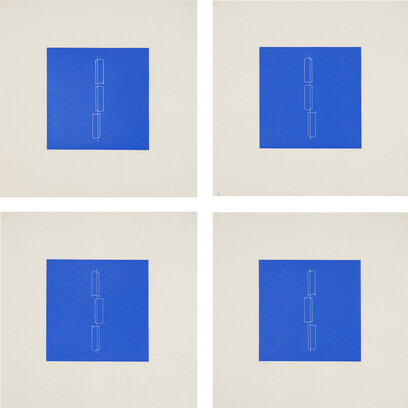
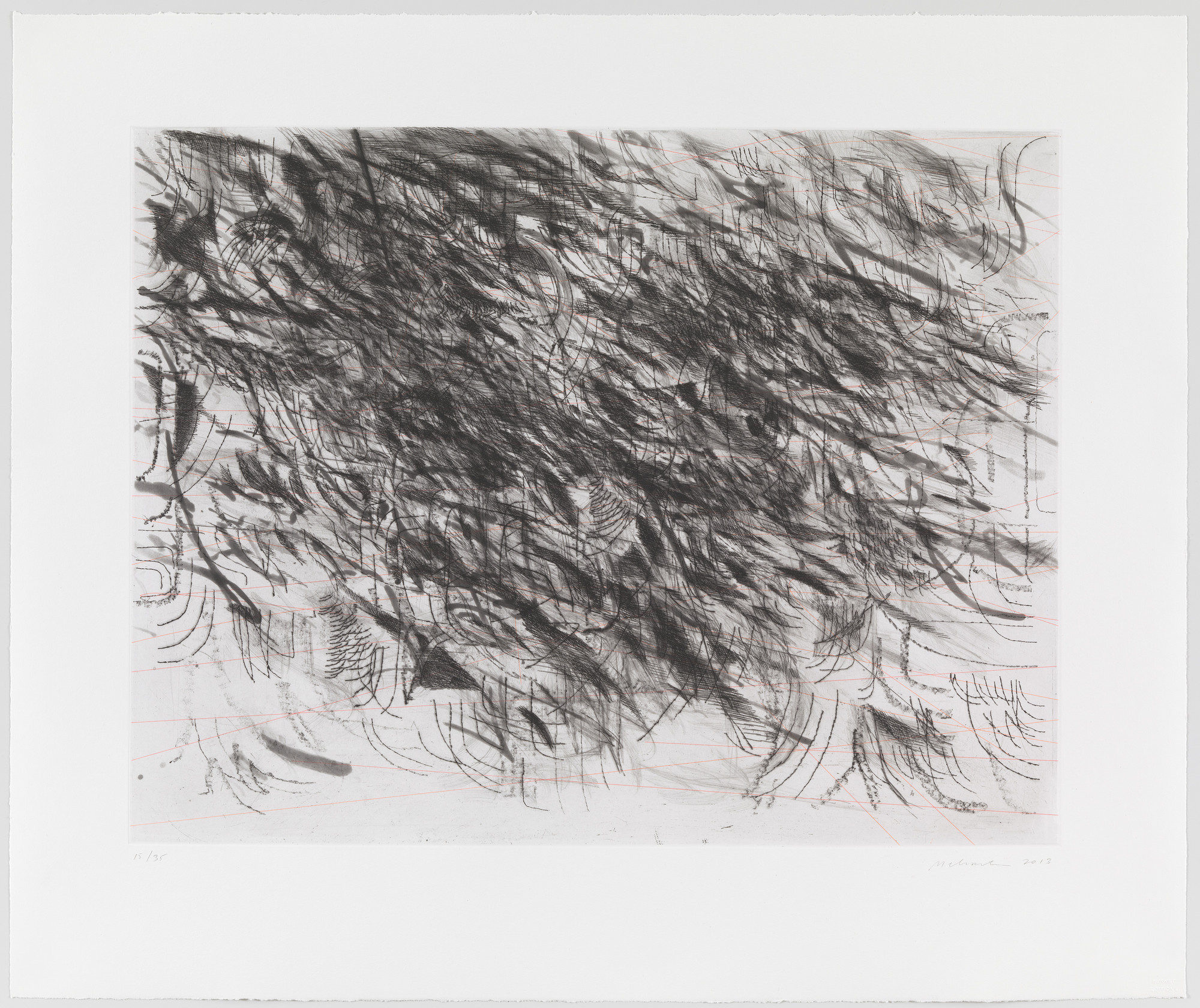
















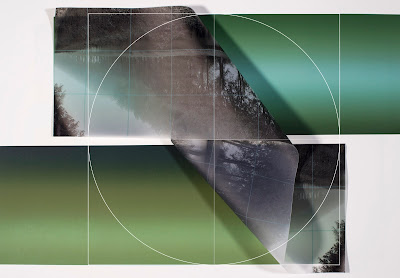


































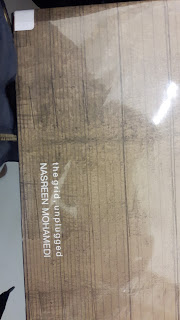



No comments:
Post a Comment